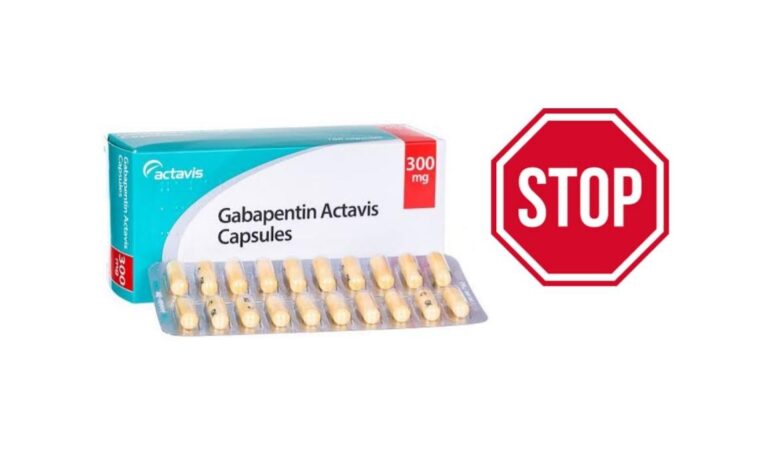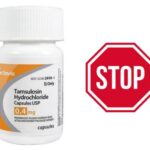How to Stop Taking Gabapentin Safely

Medication compliance or adherence refers to the degree or extent of conformity to the recommendations about day-to-day treatment by the provider with respect to the timing, dosage, and frequency. It may be defined as the extent to which a patient acts in accordance with the prescribed interval, and dose of a dosing regimen.
Adherence to therapies is a primary determinant of treatment success. Failure to adhere to the prescribed regimen is a serious problem that not only affects the patient but also the health care system. Medication non-adherence in patients leads to substantial worsening of disease, death, and increased health care costs.
What is Gabapentin?
Gabapentin is a medication used along with other medications to help control certain types of seizures in people who have epilepsy. Gabapentin capsules, tablets, and oral solutions are also used to relieve the pain of postherpetic neuralgia (PHN; the burning, stabbing pain or aches that may last for months or years after an attack of shingles).
Gabapentin extended-release tablets (Horizant) are used to treat restless legs syndrome (RLS; a condition that causes discomfort in the legs and a strong urge to move the legs, especially at night and when sitting or lying down).
How does gabapentin work?
Gabapentin is in a class of medications called anticonvulsants. Gabapentin treats seizures by decreasing abnormal excitement in the brain. Gabapentin relieves the pain of PHN by changing the way the body senses pain. It is not known exactly how gabapentin works to treat restless legs syndrome. For postherpetic neuralgia, it seems to prevent the increase in sensitivity to pain that occurs. For seizures, it may alter the effect of calcium (low levels of calcium may cause seizures).
How should this medicine be used?
Gabapentin comes as a capsule, a tablet, an extended-release (long-acting) tablet, and an oral solution (liquid) to take by mouth. Gabapentin capsules, tablets, and oral solution are usually taken with a full glass of water (8 ounces [240 milliliters]), with or without food, three times a day.
These medications should be taken at evenly spaced times throughout the day and night; no more than 12 hours should pass between doses. The extended-release tablet (Horizant) is taken with food once daily at about 5 PM. Follow the directions on your prescription label carefully, and ask your doctor or pharmacist to explain any part you do not understand. Take gabapentin exactly as directed. Do not take more or less of it or take it more often than prescribed by your doctor.
Gabapentin extended-release tablets cannot be substituted for another type of gabapentin product. Be sure that you receive only the type of gabapentin that was prescribed by your doctor. Ask your pharmacist if you have any questions about the type of gabapentin you were given.
Swallow the extended-release tablets whole; do not cut, chew, or crush them.
If your doctor tells you to take one-half of a regular tablet as part of your dose, carefully split the tablet along the score mark. Use the other half-tablet as part of your next dose. Properly dispose of any half-tablets that you have not used within several days of breaking them.
If you are taking gabapentin to control seizures or PHN, your doctor will probably start you on a low dose of gabapentin and gradually increase your dose as needed to treat your condition. If you are taking gabapentin to treat PHN, tell your doctor if your symptoms do not improve during your treatment.
Gabapentin may help to control your condition but will not cure it. Continue to take gabapentin even if you feel well.
What happens when you stop taking gabapentin?
Do not stop taking gabapentin without talking to your doctor, even if you experience side effects such as unusual changes in behavior or mood. If you suddenly stop taking gabapentin tablets, capsules, or oral solutions, you may experience withdrawal symptoms such as anxiety, difficulty falling asleep or staying asleep, nausea, pain, and sweating. If you are taking gabapentin to treat seizures and you suddenly stop taking the medication, you may experience seizures more often. Your doctor may decrease your dose gradually over at least a week.
How to Stop Taking Gabapentin
As earlier stated, you should not stop taking gabapentin without first discussing it with your doctor, abruptly stopping gabapentin may often result in withdrawal symptoms which can begin within 12 hours to 7 days after quitting the medication, and last up to 10 days. Symptoms of gabapentin withdrawal may include:
- Nausea
- Dizziness
- Headaches
- Insomnia
- Anxiety
Gabapentin dependence and withdrawal are most common among people who use at least one other substance, such as opioids or alcohol. In the case reports, all patients had past drug or alcohol addiction issues.
The best way to safely quit gabapentin is under the supervision of a doctor who will develop a plan to slowly take you off the medication by slowly reducing your dose of gabapentin.
Your doctor will develop a plan to slowly take you off the medication. This tapering-off process which usually lasts over a week or over several weeks will help you avoid the unwanted side effects of withdrawal associated with stopping gabapentin.





